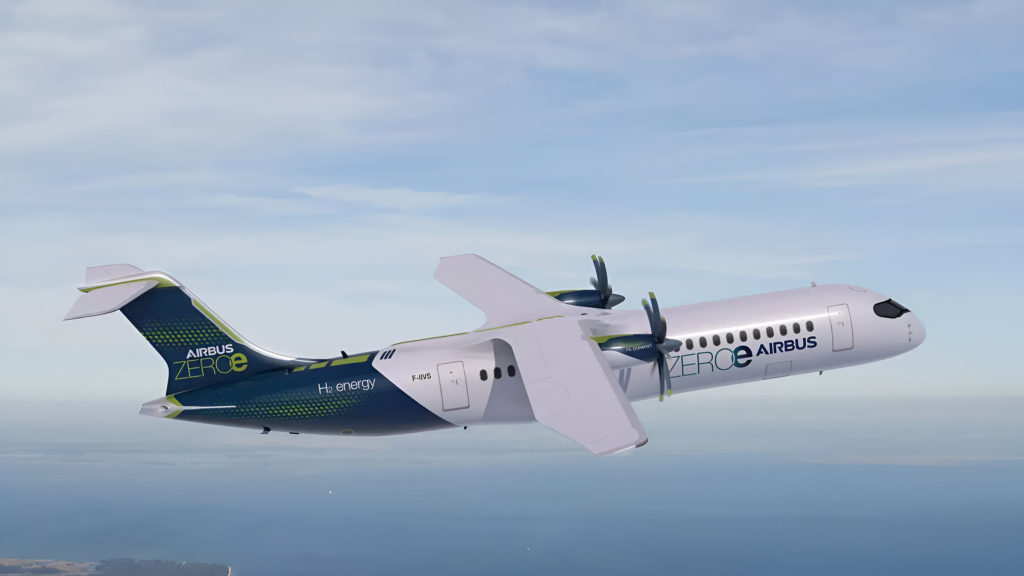Airbus is leading a revolutionary shift in aviation with its ambitious ZEROe project, aiming to develop the world’s first hydrogen-powered commercial aircraft. This initiative represents a significant step toward sustainable air travel, using hydrogen fuel cells to generate clean electrical power for flight. As climate concerns intensify, the ZEROe program offers a glimpse into how the aviation industry is adapting to meet environmental challenges while maintaining the performance needed for commercial operations. Let’s explore the five key aspects of this groundbreaking project that could transform air travel in the coming decade.
Hydrogen as Aviation’s Clean Energy Solution

Hydrogen represents one of the most promising clean energy solutions for aviation’s sustainable future. Unlike conventional jet fuels that produce significant carbon emissions, hydrogen combustion creates only heat and water as byproducts, offering a potentially carbon-free alternative for powering aircraft. This remarkable environmental profile explains why companies like Airbus are investing heavily in hydrogen technology despite its current challenges. Hydrogen fuel has several advantages beyond its clean-burning properties. It offers excellent energy density by weight (though not by volume), making it theoretically capable of powering aircraft over commercial distances once the storage technologies mature. Airbus began exploring hydrogen’s potential in 2020 when it launched the ZEROe project, and the company recently reaffirmed its commitment to this technology path at the 2025 Airbus Summit. While other sustainable aviation approaches like battery-electric systems face severe weight limitations for longer flights, hydrogen fuel cells could potentially deliver the range and performance needed for commercial operations while dramatically reducing aviation’s environmental footprint.
The ZEROe Aircraft Design

After evaluating four different hydrogen-powered aircraft concepts, Airbus has focused its efforts on a specific ZEROe design that shows the most promise for commercial viability. The selected configuration features a single-aisle aircraft powered by four electric propellers – two mounted on each wing. These propellers are driven by electric motors capable of generating two megawatts of power each, creating a total of eight megawatts of propulsion power. This propeller-based approach differs significantly from conventional jet engines but offers efficiency advantages that are particularly beneficial when paired with hydrogen fuel cell technology. The aircraft’s design had to balance several competing factors: aerodynamic efficiency, space for hydrogen storage, weight distribution, and passenger capacity. While Airbus initially explored turbofan, turboprop, and even blended-wing body configurations, the current design represents what the company believes offers the best combination of technical feasibility and commercial practicality. This aircraft would still serve traditional commercial routes but would do so with dramatically lower emissions, positioning the ZEROe as a potential successor to current single-aisle workhorses like the A320 family that form the backbone of many airline fleets.
Fuel Cell Technology: Powering Flight with Electrochemistry

At the heart of the ZEROe concept is an advanced fuel cell system that converts hydrogen into electricity through an electrochemical reaction. Each of the four electric propeller motors is powered by its own dedicated fuel cell system, with hydrogen and oxygen from the atmosphere serving as the reactants. This system operates continuously as long as hydrogen fuel remains available, making it suitable for the extended operation required for commercial flights. Airbus has made significant progress in this area, demonstrating a 1.2MW hydrogen-propulsion system in 2023 and later performing end-to-end testing of an integrated system that included fuel cell stacks, electric motors, gearboxes, inverters, and heat exchangers. However, significant challenges remain. Current fuel cells aren’t powerful enough to drive commercial aircraft without becoming prohibitively heavy. To address this limitation, Airbus formed a partnership with automotive supplier ElringKlinger to create a joint venture called Aerostack, focused specifically on developing aviation-grade fuel cells with the necessary power density. This partnership exemplifies how the aviation industry is leveraging expertise from other sectors to accelerate hydrogen technology development, with automotive fuel cell knowledge proving particularly valuable for aviation applications.
Building a Hydrogen Infrastructure Network

Even the most brilliantly designed hydrogen aircraft would be useless without the infrastructure to fuel it. Recognizing this challenge, Airbus has launched the ambitious “Airbus Hydrogen Hubs at Airports” program to develop the necessary hydrogen ecosystem for aviation. This initiative aims to create a network of hydrogen production, storage, and distribution facilities at airports worldwide, ensuring that hydrogen-powered aircraft can operate across global routes. The program has already gained remarkable traction, with 200 airports joining alongside numerous airlines including Delta Air Lines, Scandinavian Airlines, EasyJet, Wizz Air, Iberia, Air Nostrum, Air New Zealand, ANA, and Korean Air. This broad industry participation suggests growing confidence in hydrogen’s potential as an aviation fuel. The program addresses critical questions: Where will the hydrogen come from? How will it be stored at airports? How quickly can aircraft be refueled? By tackling these infrastructure challenges in parallel with aircraft development, Airbus hopes to avoid the fate that befell hydrogen cars, where inadequate refueling infrastructure severely limited adoption despite promising technology. This coordinated approach to both aircraft and infrastructure development significantly improves the chances that hydrogen-powered commercial flight will become a practical reality.
Timeline and Testing Roadmap

Airbus has established an ambitious but methodical roadmap toward hydrogen-powered commercial flight. The company plans to conduct integrated ground testing of the ZEROe’s propulsion technology at its Electric Aircraft System Test House in Munich as soon as 2027. This crucial milestone will validate whether the complete system – from hydrogen tanks to fuel cells to electric motors – can deliver the performance required for commercial aviation. While Airbus hasn’t announced a specific date for the ZEROe prototype’s first flight, the company’s stated goal of introducing a hydrogen-powered commercial aircraft “as soon as next decade” suggests we might see the prototype flying within the next few years. This timeline reflects both the urgency of addressing aviation’s climate impact and the significant technical challenges that remain. The development path includes rigorous testing of all components, system integration challenges, safety certification, and ultimately scaling the technology to commercial relevance. If successful, the 2030s could see hydrogen-powered aircraft beginning to enter airline fleets, potentially marking the beginning of a fundamental shift in how we power commercial flight. This transition would represent one of the most significant technological transformations in aviation since the introduction of jet engines.




























